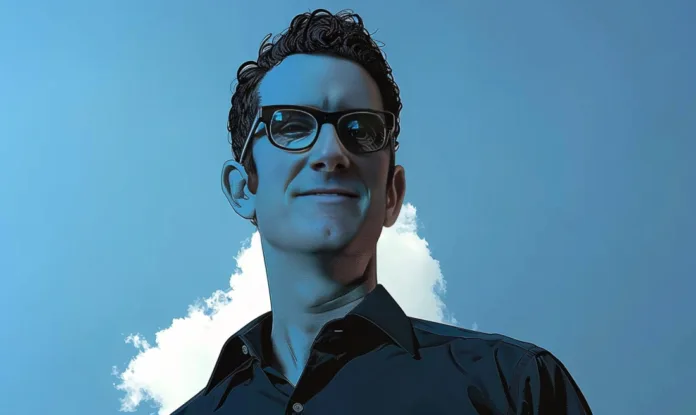Picture this: a farewell party for the third-party cookie, complete with a tiny violin playing in the background as digital marketers gather around, some mourning, others secretly popping champagne. But let’s not dwell on the past.
As these digital delicacies crumble into the abyss of internet history, we’re thrust into an era where the rules of engagement in the online advertising realm are being rewritten.
Gone are the days of relying on a single, omnipotent source of truth to guide us through the murky waters of digital targeting and measurement. Instead, we’re entering a world that demands we navigate with a mix of old maps, new compasses, and a significant dose of ingenuity.
In the grand scheme of things, third-party cookies have been the glue holding together the vast, intricate tapestry of digital advertising. These tiny trackers, omnipresent yet invisible, have shaped the way businesses talk to us, learn from us, and yes, sell to us. But as major browsers like Chrome join Safari and Firefox in phasing them out, a seismic—not in the literal sense, of course—shift is underway. This transformation is not just about how ads find their way to us but fundamentally challenges how their impact is measured and valued.
This isn’t merely a eulogy for third-party cookies. It’s an exploration, a critique, and perhaps a mildly amused observation of the chaos, creativity, and sheer willpower driving the digital advertising world through one of its most significant transitions.
Through the lens of various industry voices—from the cautiously optimistic to the sky-is-falling pessimists—we’ll dive into the heart of what the cookie depreciation saga means for measurement over targeting, Google’s AI push, the skepticism and strategy dichotomy, Amazon’s stealth moves, and the marketers’ labyrinth of adapting strategies.
So, as we bid adieu to our crumbly companions, let’s embark on this journey through the cookie-less wilderness, armed with wit, wisdom, and a willingness to embrace the unknown. After all, the future of digital advertising is being written now, and it promises to be an epic tale of adaptation, innovation, and perhaps, a little bit of magic.
As we peel back the layers of the digital advertising onion, it becomes increasingly clear that the core issue at hand isn’t just the loss of a convenient targeting tool. No, the true crux of the matter, as illuminated by insights from DIGIDAY, lies in the thorny thicket of measurement. With the fading glow of third-party cookies, marketers are waking up to a morning-after reality where the once-clear path to measuring ad success is now overgrown with uncertainty. It’s not merely about figuring out who to talk to; it’s about understanding if anyone is listening.
The narrative of digital advertising’s upheaval took a compelling turn about four years ago when Google first aired its grievances against third-party cookies. The concerns were not unfounded—tracking user behavior across the vast expanse of the internet was becoming increasingly complicated, leading to fragmented data, misattribution, and a general sense of wandering in the dark with a faulty flashlight. This issue wasn’t new, as Safari and Firefox had already started their cookie clean-up operations. But with Chrome’s dominion over the browser kingdom, the stakes were higher than ever.
Enter the pivotal moment: the realization that a mere 1% reduction in cookie-based tracking was enough to send ripples of concern through the marketing community. As Nick Tiano of Making Science pointed out, this seemingly insignificant figure served as a wake-up call, a real-life experiment in what a future devoid of cookies might look like. Marketers found themselves at a crossroads, seeking new methods to track, analyze, and justify their digital ad spend without the crutch of third-party cookies.
In this new era, the industry’s focus has gradually shifted towards measurement as the bigger, bolder challenge. Jamie Sltzer of Havas Media’s CSA division captured the sentiment perfectly, emphasizing that while the market is flush with tools for activation, the solutions for accurate and reliable measurement in a post-cookie world are still in their infancy. The quest for attribution, media mix modeling, and experimental solutions has become akin to digital alchemy—transforming base data into marketing gold without the traditional ingredients.
Attribution, once a straightforward task with third-party cookies, now looms as a Herculean challenge. Marketers, however, aren’t waiting for the gods to deliver a solution. They’re reallocating resources, doubling down on media mix modeling, and exploring new frontiers like attention measurement. Yet, as Stephani Estes of Goodway Group pointed out, the end goal remains unchanged: to draw a straight line from targeted efforts to tangible outcomes, a task that’s become exponentially more complex in the absence of our crumbling cookie companions.
This shift in focus from targeting precision to the murkiness of measurement illuminates a fundamental truth: the digital advertising landscape is undergoing a transformation far more profound than many had anticipated. It’s not just about finding new ways to reach audiences; it’s about redefining success in a world where the old markers have vanished. And as we venture further into this uncharted territory, the industry’s ingenuity and resilience are put to the test, challenging marketers to invent new metrics and methodologies that can thrive in the post-cookie ecosystem.
The digital advertising ecosystem braces for the impact of third-party cookie deprecation: all eyes have turned to Google, the erstwhile champion of the online ad world. With the future of cookies crumbling, Google has stepped into the fray with a message that is part clarion call, part prophecy: the time to adapt is now, and AI is the beacon leading the way out of the darkness. This directive, as detailed by SEARCH ENGINELAND, underscores Google’s stance on the urgent need for advertisers to embrace artificial intelligence as the linchpin of their future strategies.
Dan Taylor, Google’s Vice President of Global Advertising Strategies, isn’t just nudging advertisers towards the new dawn of AI; he’s pushing them with both hands, urging immediate action. The subtext is clear: the deprecation of third-party cookies isn’t a looming event on the horizon; it’s a transformative shift already underway, and delay is tantamount to denial. Taylor’s call to arms comes amid warnings from regulatory bodies, like the UK’s Competition and Markets Authority, raising privacy concerns that could potentially stymie Google’s cookie phase-out plans. Yet, Google’s confidence appears unshaken, with Taylor assuring that the transition to a cookieless Chrome by the second half of 2024 remains on track.
However, beneath this forward-looking optimism lies a complex web of challenges and opportunities. Taylor’s advice to advertisers—to invest in AI, refine targeting practices, and revamp measurement and ad delivery strategies—paints a picture of a future where precision and consumer control coexist in harmony. But this vision is not without its critics, who question the feasibility of replicating, let alone surpassing, the capabilities of third-party cookies with AI and other technologies.
This push towards AI and the broader narrative around finding long-term cookie alternatives illuminate a pivotal moment in digital advertising. Google is positioning itself as both a harbinger of change and a guiding light towards the next era of innovation. Yet, this transition is fraught with ambiguity. The underlying message to advertisers to provide more information and control to consumers hints at a future where the balance of power shifts, where the value exchange between advertiser and consumer is more transparent and, ostensibly, more equitable.
Investing in AI, as Taylor suggests, is not just a tactical move but a strategic imperative, aiming to fill the void left by cookies with predictive capabilities that promise to usher in the next decade of digital marketing innovation. This vision of the future, where digital marketing’s precision is enhanced rather than diminished by the absence of cookies, is both ambitious and aspirational.
Google’s stance and the AI directive represent a critical juncture for the digital advertising industry. On one hand, it’s a call to action that echoes the broader industry shift towards more privacy-conscious and technologically advanced advertising mechanisms. On the other, it’s a moment of reckoning for advertisers, publishers, and tech providers alike, challenging them to navigate the uncertainties of a post-cookie world without losing sight of the core objective: delivering value to both businesses and consumers.
As we delve deeper into this narrative, it becomes apparent that Google’s directive is not just about embracing new technologies but about reimagining the foundations of digital advertising itself. The journey ahead is uncertain, but the direction is clear: adapt, innovate, and, above all, move forward with an eye towards a more sustainable and consumer-friendly future.
Then we have Jason Bier, a prominent figure in the ad tech space, offers a perspective that intertwines doubt with an undeniable push towards preparation for an uncertain future.
Bier articulates a skepticism that resonates with a segment of the industry, casting doubt on the finality and totality of third-party cookie deprecation. Despite Google’s concrete steps towards reducing cookie dependency, Bier suggests that the complete eradication of third-party cookies might be an overblown prophecy. He points to a history of delayed deadlines, legal entanglements, and a labyrinth of technical challenges as evidence that the cookie apocalypse may not unfold as swiftly or as devastatingly as some predict.
This skepticism isn’t just contrarianism; it’s rooted in a deep understanding of the ad tech ecosystem’s resilience and its capacity for innovation and adaptation.
However, this skepticism doesn’t advocate for complacency. Instead, it highlights a critical viewpoint within the broader discourse: the belief that while the landscape is indeed changing, the demise of third-party cookies might not signify an end but rather a transformation of the digital advertising toolkit.
Despite his skepticism, Bier’s commentary doesn’t shy away from the need for proactive preparation. This is where the dual outlook of skepticism and strategy becomes most evident.
The call to action isn’t to wait and watch but to actively engage with the changing ecosystem, exploring new technologies, platforms, and methodologies. The strategic outlook acknowledges the reality of a multi-channel, cookie-less future, urging marketers to expand beyond the confines of traditional cookie-based advertising.
This strategic perspective emphasizes diversification, advocating for investments in a broad array of advertising technologies and platforms. From exploring the potential of first-party data to harnessing the power of AI and machine learning for predictive modeling, the strategy involves a holistic approach to digital marketing. It recognizes the increasing importance of direct relationships with consumers, the rising relevance of privacy-compliant targeting solutions, and the necessity of agile, adaptable campaign strategies.
Moreover, the strategic outlook underscores the importance of preparing for an advertising ecosystem that prioritizes transparency, consumer privacy, and data ethics. It’s a call to rethink engagement strategies in a way that respects consumer preferences while delivering personalized, impactful advertising experiences. The focus shifts from a narrow obsession with cookie-based targeting to a broader vision for sustainable, effective marketing in a rapidly evolving digital landscape.
A new player emerges from the shadows with a stealthy maneuver that could potentially redefine the battleground: Amazon. With its project ID++, Amazon is not just entering the fray; it’s bringing its own arsenal to the fight for the future of online advertising. This move, as highlighted by eMarketer, underscores the tech giant’s ambition to carve out a significant niche within an identity-restricted world, signaling a direct challenge to Google’s dominance and offering a glimpse into a post-cookie digital ecosystem.
Amazon’s foray into the post-cookie landscape with ID++ represents a bold step towards shaping the future of digital advertising. Initially hinted at through job listings that quickly disappeared as if part of a covert operation, ID++ has been described as a next-generation suite of products and services aimed at propelling Amazon’s ad solutions forward in an era where traditional identifiers like third-party cookies are fading away. This initiative signifies Amazon’s commitment to innovating within the constraints of increasing privacy regulations and changing consumer expectations.
Amazon’s approach with ID++ is poised to introduce a novel paradigm in targeting and measurement, promising advertisers an alternative that could potentially offer more granular and precise audience engagement strategies without infringing on privacy norms. By leveraging its vast troves of first-party data, Amazon aims to build addressability models that not only comply with privacy standards but also enhance the effectiveness of digital advertising in a cookie-less world.
The significance of Amazon’s entry into this space cannot be overstated. As third-party cookies become a relic of the past, the digital advertising industry is in dire need of solutions that can navigate the delicate balance between personalization and privacy. ID++ could represent just such a solution, offering a beacon for advertisers searching for viable paths forward.
Amazon’s stealthy maneuver with ID++ has far-reaching implications for the digital advertising ecosystem. It introduces a potential competitor to Google’s Privacy Sandbox, presenting an alternative vision for the future of online advertising. If successful, ID++ could not only bolster Amazon’s position as a dominant force in digital advertising but also catalyze a shift in how advertisers, publishers, and tech platforms approach the challenges of targeting and measurement in a post-cookie environment.
Moreover, the introduction of ID++ into the market highlights the ongoing fragmentation and innovation within the digital advertising space. Just as the video ad landscape saw a proliferation of measurement standards and platforms following Nielsen’s accreditation issues, the digital advertising sector may witness a similar diversification of solutions and standards. This fragmentation could lead to a more competitive, albeit complex, ecosystem where multiple identity solutions vie for dominance, each with its own approach to balancing targeting efficacy with privacy considerations.
As Amazon makes its stealthy maneuver with ID++, the digital advertising community watches with bated breath. The potential for ID++ to alter the dynamics of online advertising is immense, offering a glimpse into a future where innovation and privacy go hand in hand. However, the success of Amazon’s initiative, and its impact on the broader ecosystem, will depend on a multitude of factors, including advertiser adoption, consumer reception, and regulatory approval.
What is clear, though, is that Amazon’s move signifies a critical juncture in the evolution of digital advertising. As the industry navigates through the challenges of cookie deprecation, initiatives like ID++ serve as testaments to the relentless pursuit of solutions that honor consumer privacy while ensuring that the digital world remains a vibrant space for advertisers to connect with their audiences. The stealthy maneuver by Amazon is not just about introducing a new product; it’s about setting the stage for the next act in the digital advertising revolution.
Let’s be clear: the digital landscape is morphing at warp speed, and if you’re not paying attention, you might as well be advertising on a billboard in the middle of a desert.
The deprecation of third-party cookies isn’t just a plot twist; it’s a complete genre shift for digital marketing. And here’s where it gets interesting, reminiscent of a moment when technology and privacy collide in a drama worthy of prime time. Marketers, once reliant on the silent workhorse of third-party data, now find themselves navigating a terrain that’s less “Mad Men” and more “Black Mirror.”
In this new era, the emphasis on first-party data isn’t just a strategy—it’s a survival mechanism. Marketers are akin to squirrels before winter, scrambling to collect and hoard every piece of valuable consumer data they can get their hands on, all while staying on the right side of privacy laws that are as forgiving as a Game of Thrones character.
The industry’s pivot toward technologies like AI and machine learning isn’t just a fad—it’s a full-on arms race. These aren’t your garden-variety algorithms; they’re the wizards behind the curtain, conjuring up consumer insights from seemingly thin air. The catch? These wizards demand a new kind of currency: vast quantities of quality data, clear strategic vision, and a dash of boldness to experiment on platforms that have yet to prove their full value.
So, as we bid a not-so-tearful goodbye to our crumbly companions, we embark on a journey not just through the cookie-less wilderness but into the heart of creativity itself.
This isn’t merely the end of an era; it’s the beginning of a new chapter in digital storytelling, where the markers of success are rewritten, and the future of advertising is as open and unpredictable as the internet itself. With a cocktail of skepticism, strategy, and a sprinkle of magic, the stage is set for a tale of adaptation and innovation.
Here’s to the marketers, the mad scientists of the digital age, charting a course through uncharted waters with nothing but their wits and a willingness to embrace the unknown.
After all, in the world of digital advertising, the future isn’t just unwritten—it’s waiting to be hacked.





















